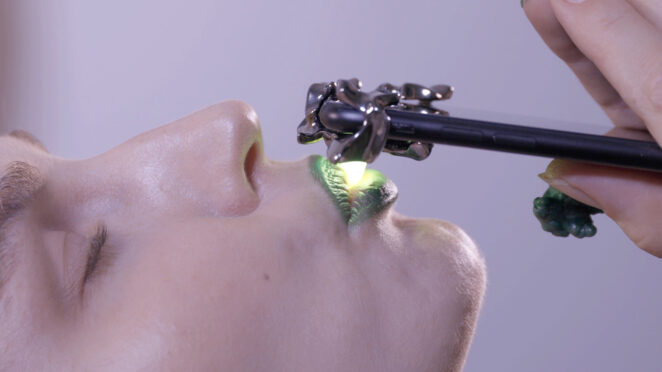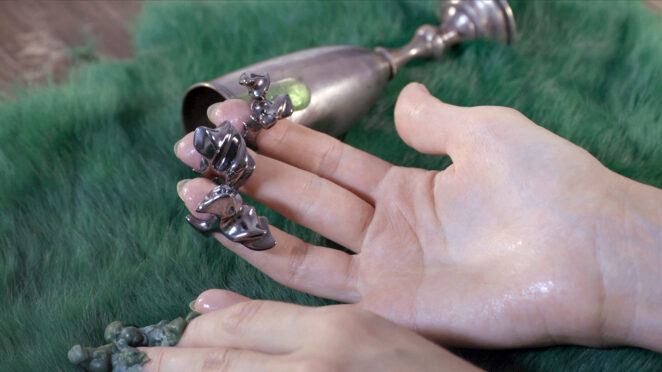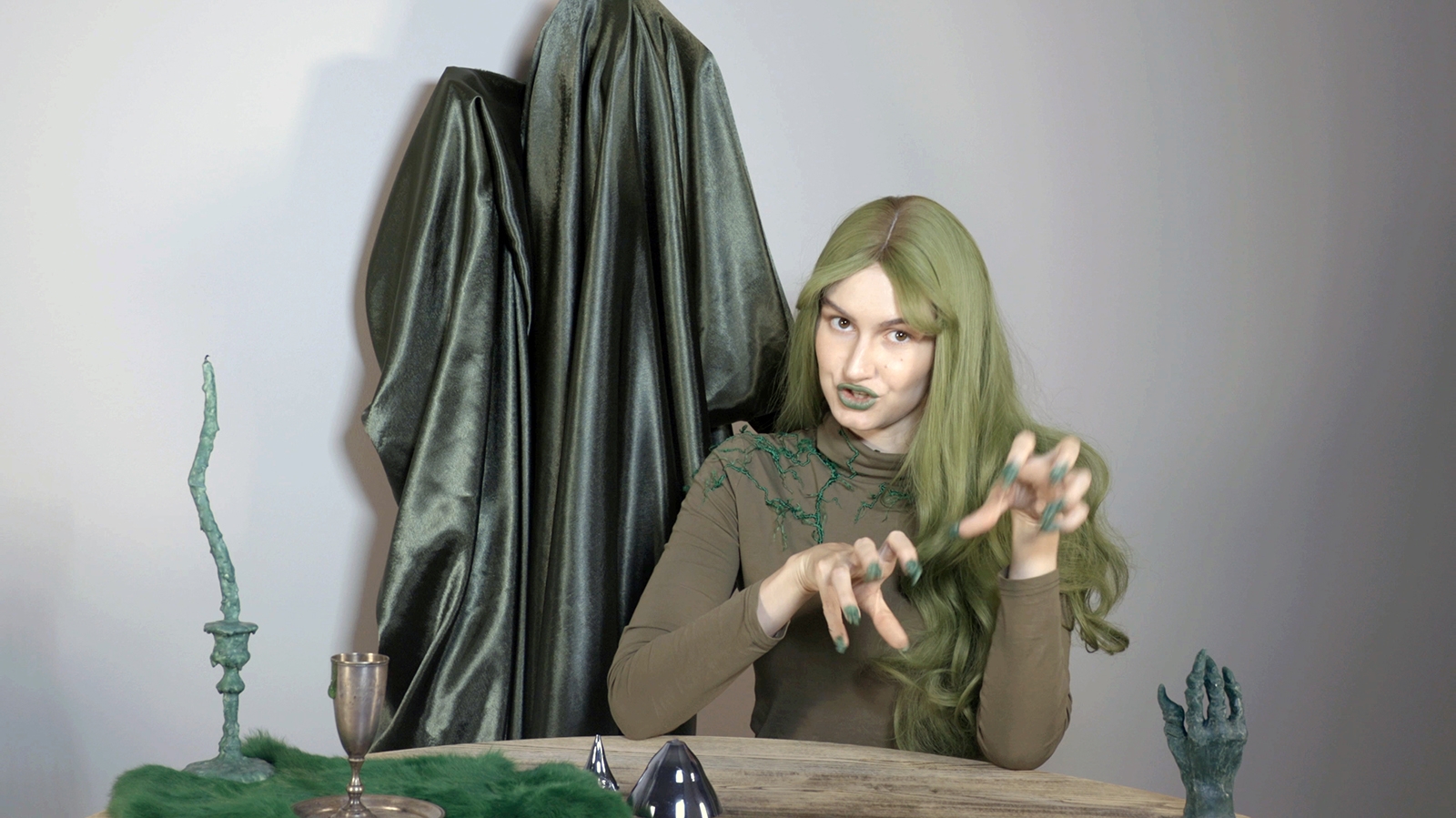“Serafita is a fictional character who helps me to expand the usual functions of jewelry. For example, filming jewelry so that it would be much more interesting for the viewer to watch a video clip than an autonomous artifact attached to a stand, ”the author notes.
The instructional videos and jewelry tools in the exhibition are designed to meet people’s specific needs. For example, someone wants to become more confident, someone – to bring about lost intimacy, and someone – to deal with aggression.
The artist considers materiality not only as a physical but also as a digital component. The action of the witch Serafita on screen becomes a “ritual” related to physicality. Without such powerful wearable signs as jewelry, there would be no sentimental added value in human life – gift rituals, tactile moments, personal memories.
Darja’s works are published in local and international publications. In the Dutch art magazine Current Obsession, jewelery critic and exhibition curator Kellie Riggs writes about Darja’s work:“Although physical jewelry is the essence of Popolitova’s creation, it is only part of the whole picture or collective ”persona” that she introduces to the viewer when she shares the jewelry online.”
Darja Popolitova was born in 1989 in Sillamäe, lives and works in Tallinn and is a doctoral student at the Estonian Academy of Arts. In her work, she uses jewelry, digital techniques and video media. Recently, Darja Popolitova has participated in exhibitions at the Arnhem Museum in the Netherlands (2020), the Museum of Art and Design in New York (2019), and the Kunstnerforbundet in Oslo (2018). Darja Popolitova is represented by galleries in Marzee Nijmegen, Beyond Antwerp, Door Mariaheide. Her works are in the Estonian Museum of Applied Art and Design, the Arnhem Museum and also in a private collection. Darja Popolitova’s work has been recognized in Estonia in 2020.






